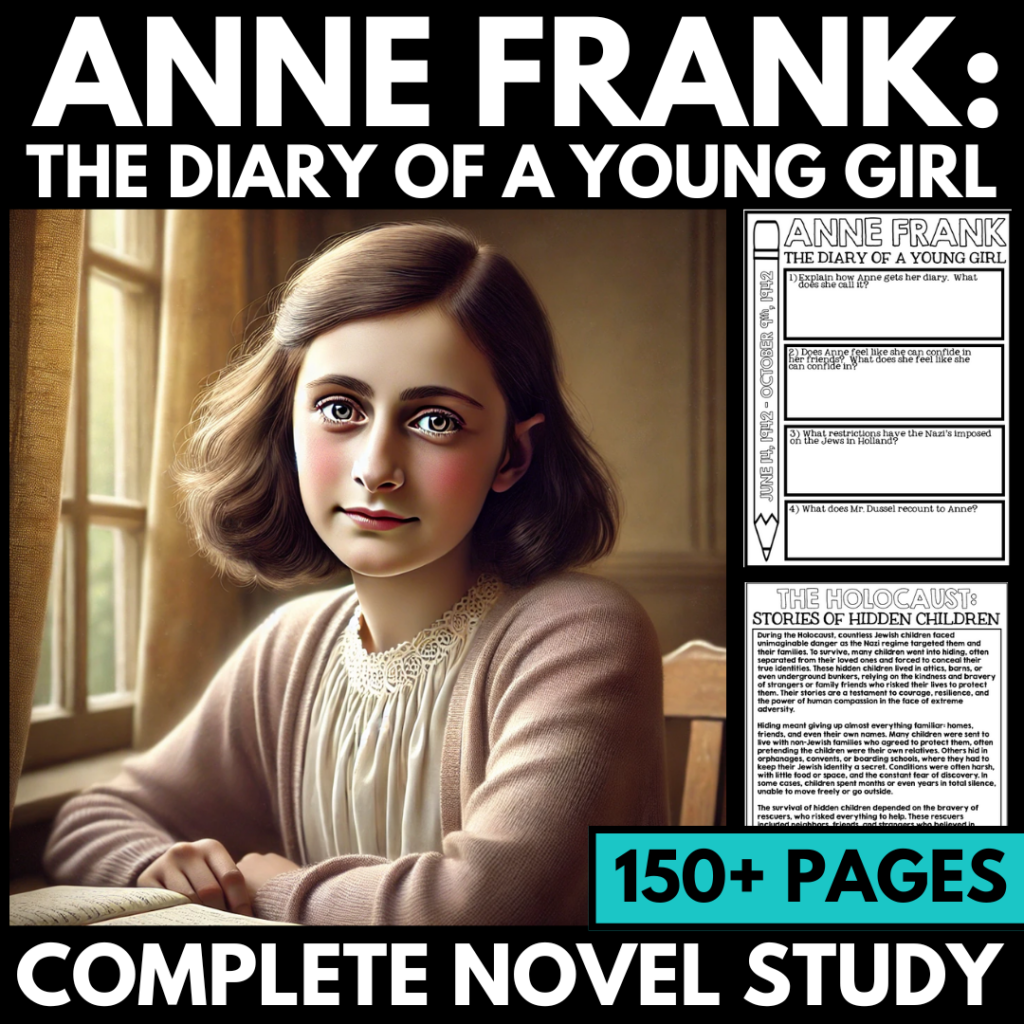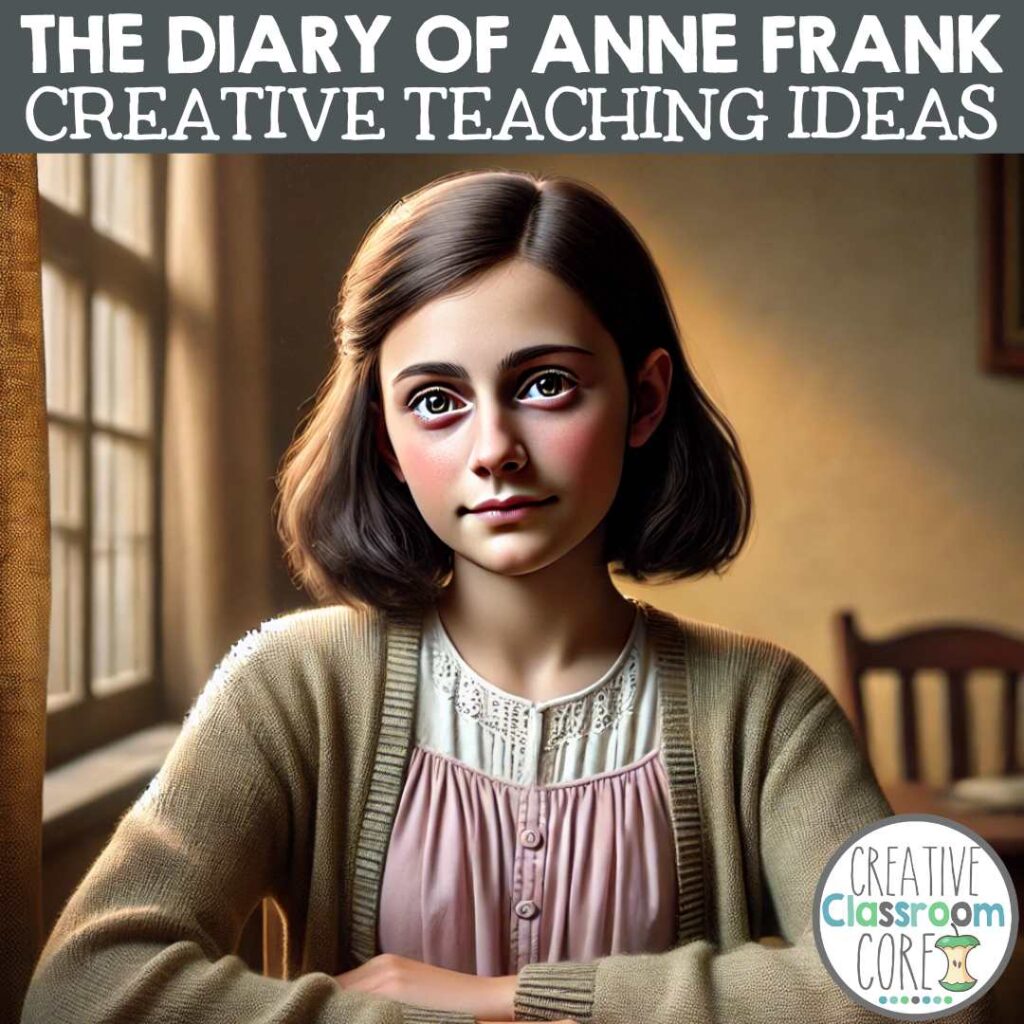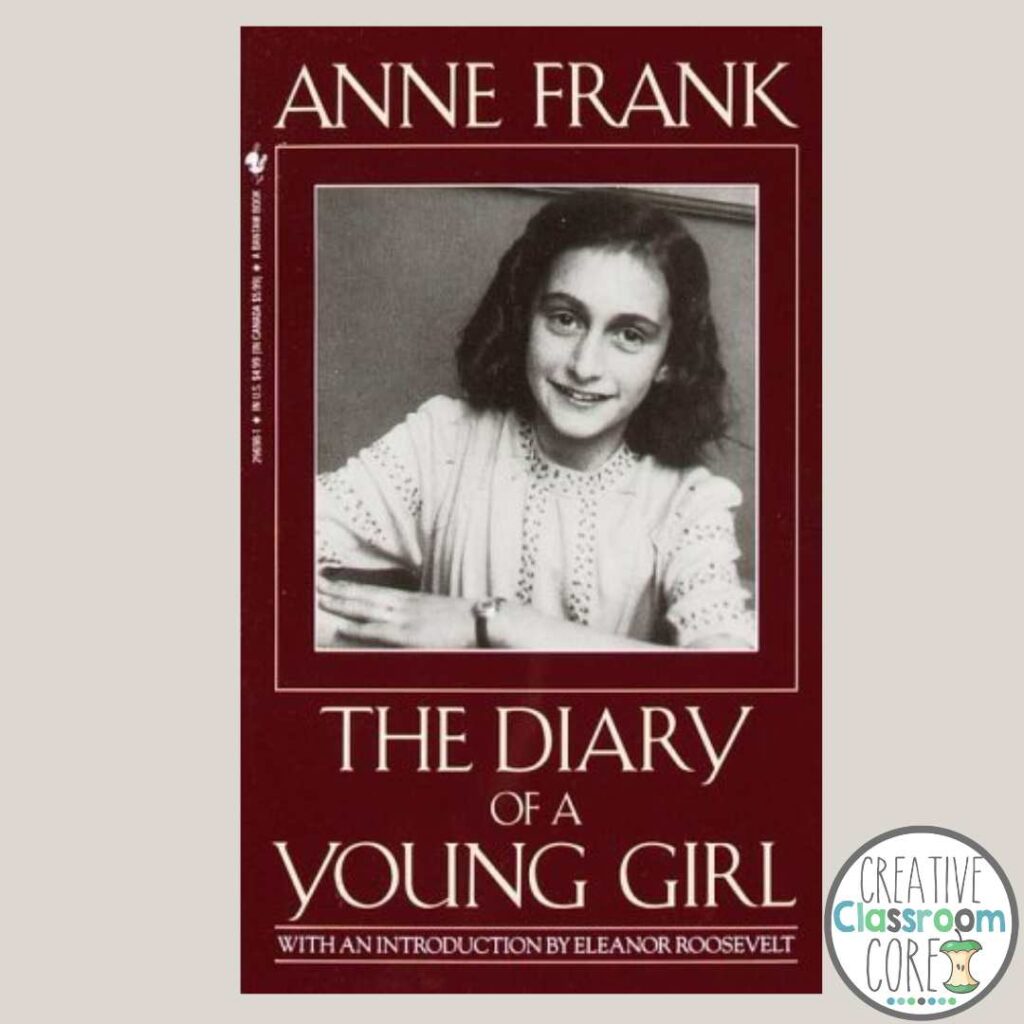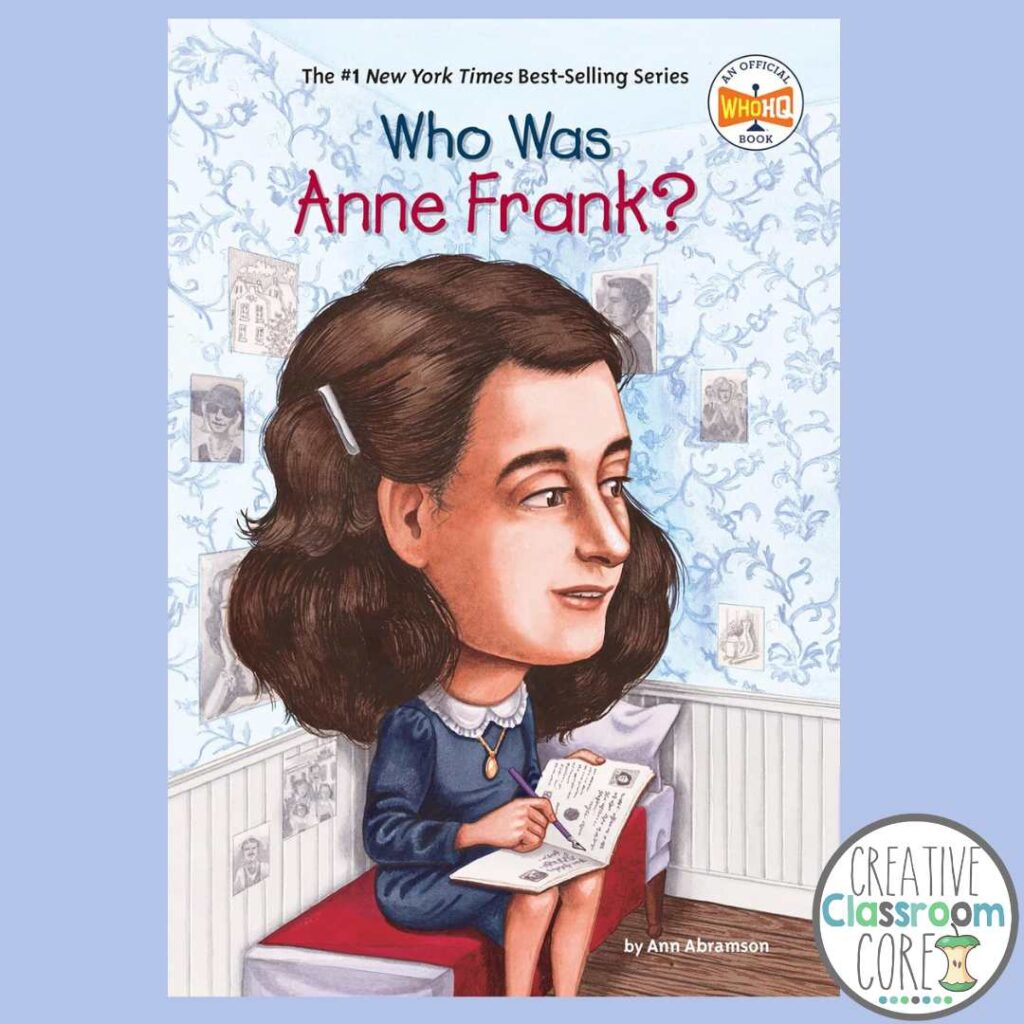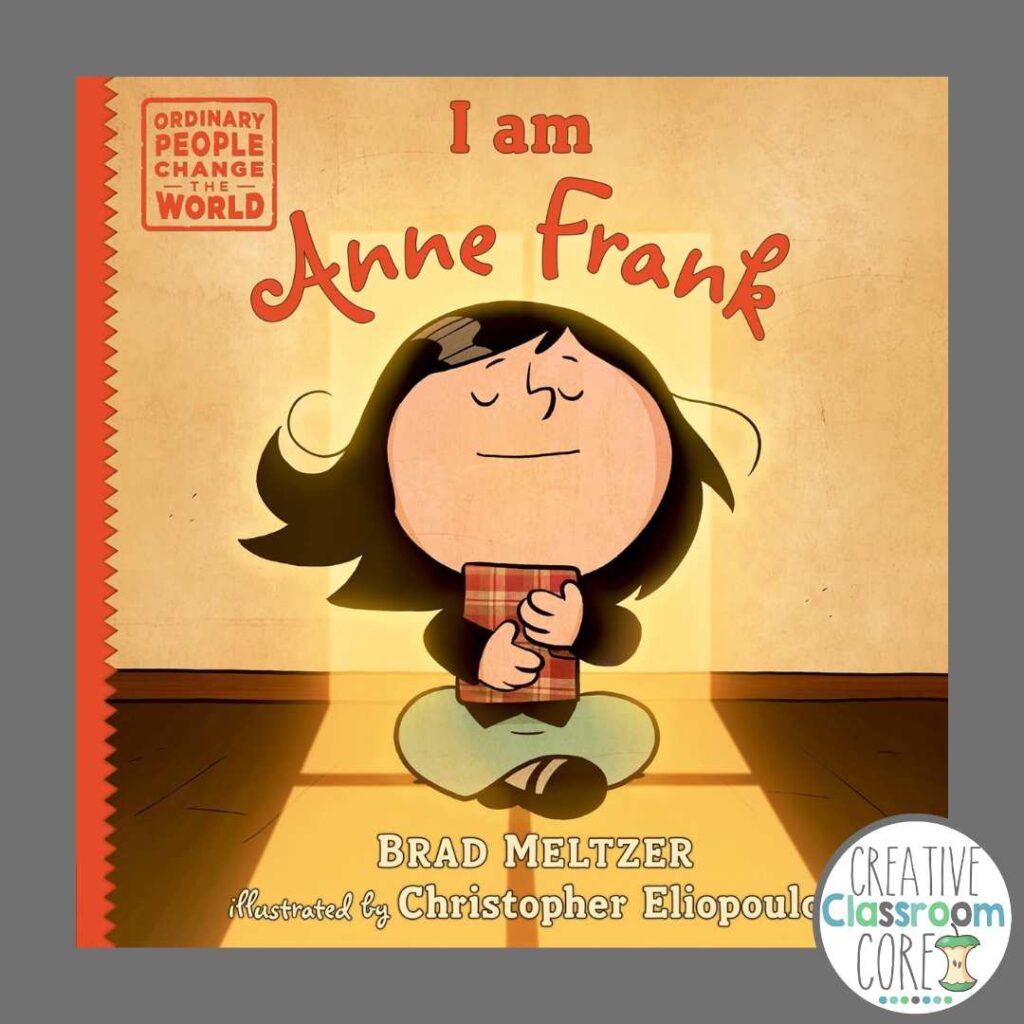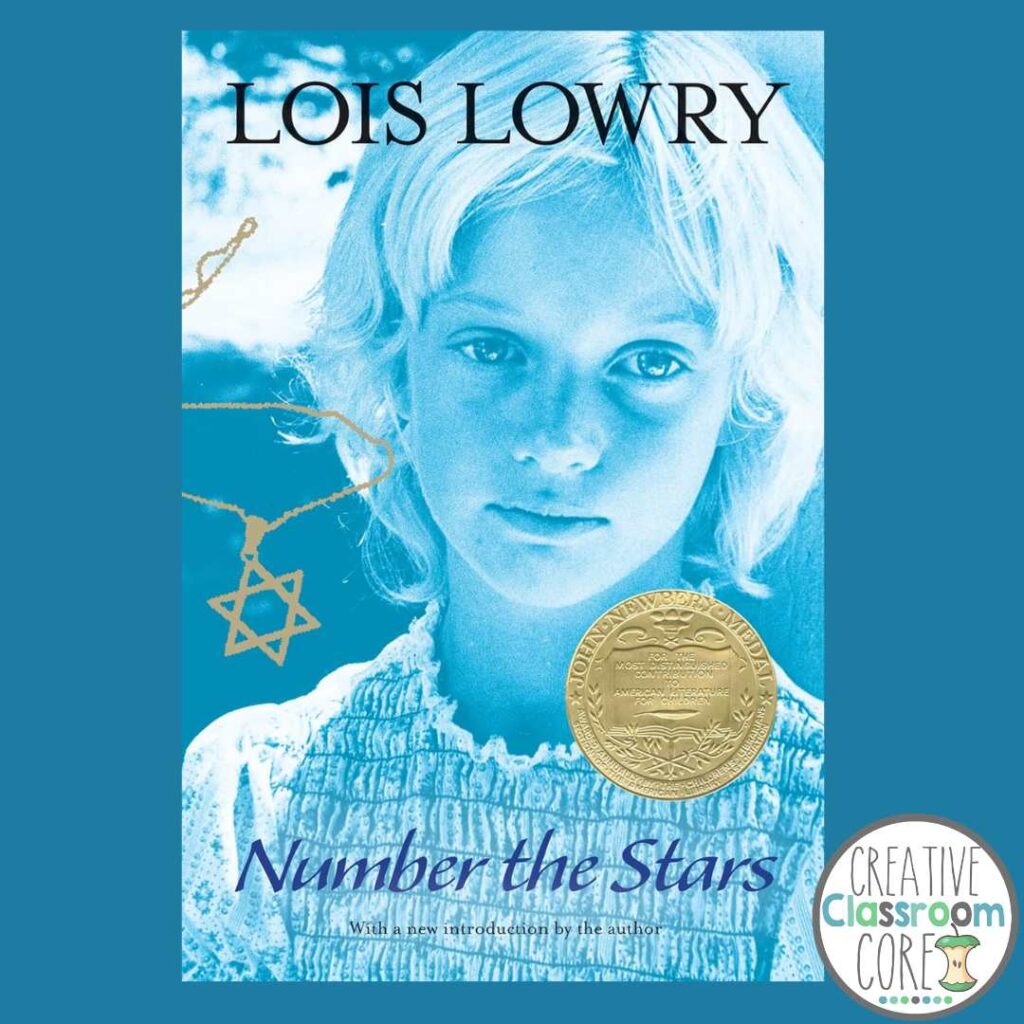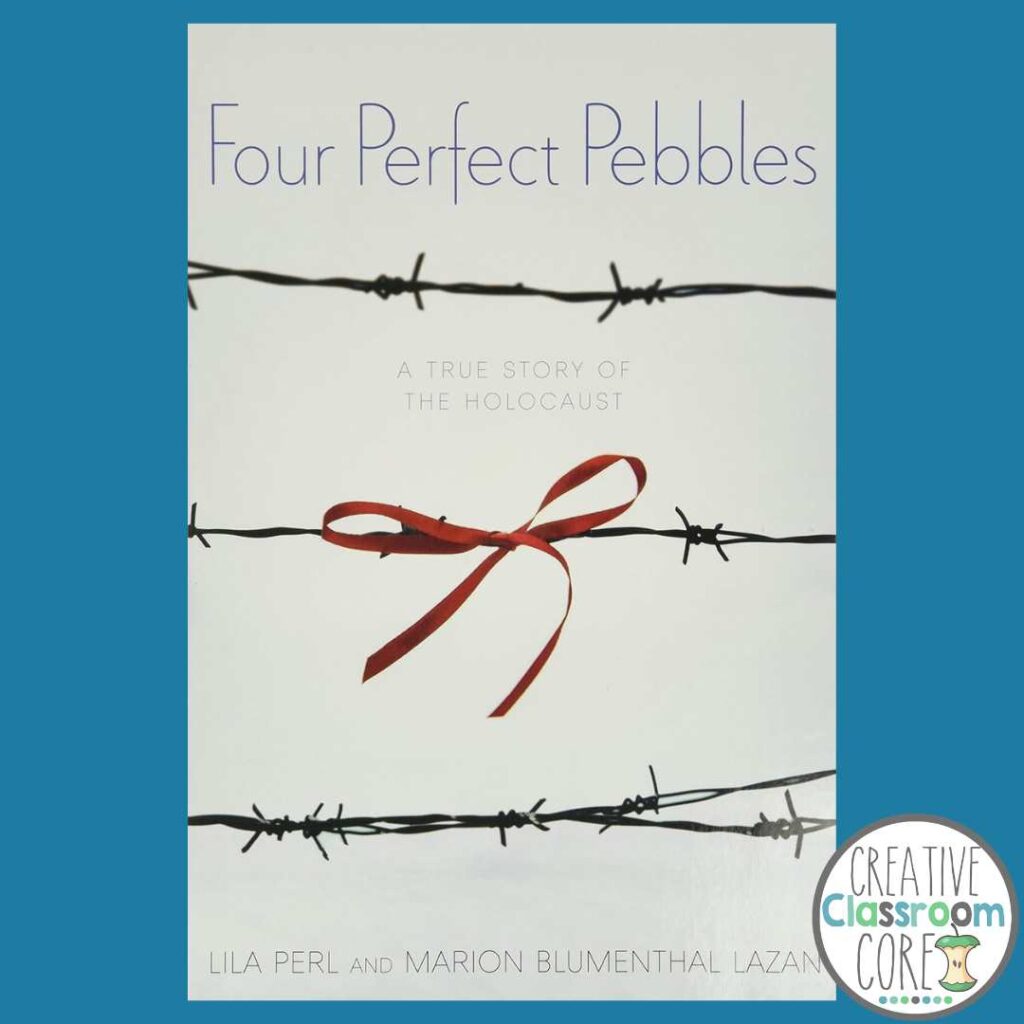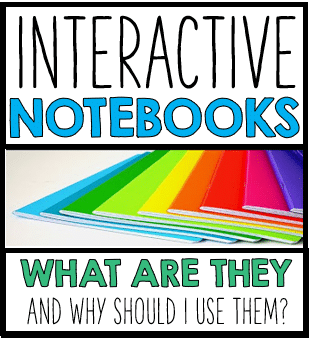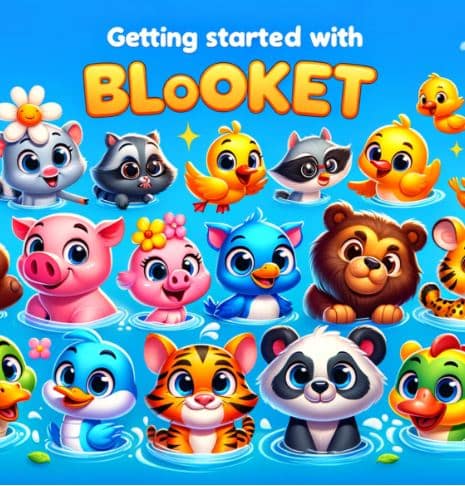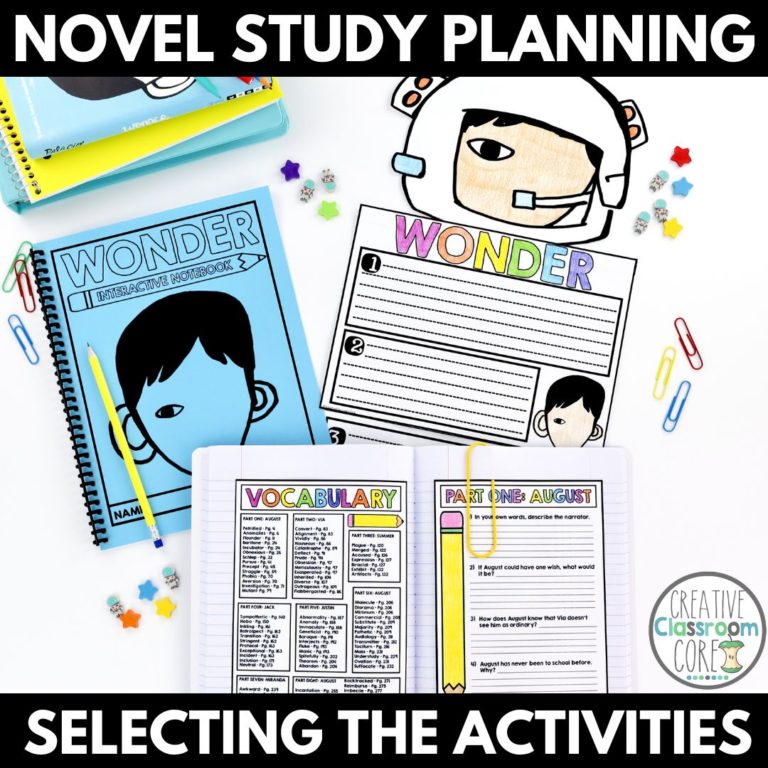The Diary of Anne Frank Teaching Ideas
By MARISSA DESPINS Updated January 27, 2025
The Diary of Anne Frank Teaching Ideas for Grades 5-8
Anne Frank’s story is one of resilience, hope, and the importance of standing up against injustice. Teaching her story to students in grades 5-8 not only introduces them to a crucial part of history but also helps them develop empathy, critical thinking, and a deeper understanding of human rights.
In this post, we’ll explore why Anne Frank’s story is an essential part of the curriculum and share some engaging teaching ideas and resources to make her story resonate with your students.
Looking for a COMPLETE novel study to use along with Anne’s diary? Click on the image or button below for over 200 pages of The Diary of Anne Frank teaching ideas!
(This post contain affiliate links which means I make a small commission if you make a purchase, at no additional cost to you. Thank you for your support!)
Why Teach About Anne Frank?
- Historical Understanding
Anne Frank’s The Diary of a Young Girl offers a personal perspective on the Holocaust. It humanizes history by presenting the experiences of a real teenager, allowing students to connect emotionally to events that might otherwise feel distant or abstract. - Empathy and Awareness
Anne’s diary provides an opportunity to discuss themes like discrimination, perseverance, and the power of hope in dark times. Students can reflect on how prejudice still affects our world and consider their role in promoting kindness and understanding. - Developing Critical Thinking
Analyzing Anne’s diary encourages students to think critically about the choices individuals and societies make during times of conflict. Discussions about moral courage and ethical responsibility make this a rich, thought-provoking topic for middle schoolers.
The Diary of Anne Frank Teaching Ideas
- Diary Entry Simulation
Have students write their own “diary entries” imagining they’re living in a historical moment. This activity helps students connect to Anne’s experience and reflect on the challenges of documenting personal feelings during difficult times. - Create a Timeline
Pair Anne’s diary entries with a timeline of World War II events. Students can see how Anne’s personal experiences overlapped with larger historical events, deepening their understanding of both. - Discussion Circles
Use quotes from Anne’s diary as prompts for class discussions. For example:- “How wonderful it is that nobody need wait a single moment before starting to improve the world.”
Discuss how small actions can create change, even during difficult times.
- “How wonderful it is that nobody need wait a single moment before starting to improve the world.”
- Empathy Mapping
Have students create “empathy maps” for Anne or another figure in her story. This visual tool encourages them to explore what the person might be thinking, feeling, saying, and doing. - Biography
Have students do individual or group research on Anne Frank and her family. Ask students to present their findings on large posters for bulletin board display to showcase their learning and share their findings with others.
For a complete biography unit to add to your collection of The Diary of Anne Frank teaching ideas, click on the image or button below!
Book Ideas to Enhance Your Lessons
Anne Frank: The Diary of a Young Girl
Start with the original diary, selecting age-appropriate passages for your students. Pairing excerpts with discussion or journaling activities makes it accessible for younger readers.
Who Was Anne Frank? by Ann Abramson
This book is an excellent introduction for younger middle schoolers, providing context about Anne’s life and the Holocaust in a way that’s easy to understand.
I Am Anne Frank by Brad Meltzer
This picture book offers a gentle but powerful introduction to Anne’s life and legacy for upper elementary or younger middle school students.
Number the Stars by Lois Lowry
While not directly about Anne Frank, this novel offers another perspective on the Holocaust and can be paired with lessons on empathy and historical context. Grab a complete novel study to use along with this story here.
Four Perfect Pebbles: A Holocaust Story by Lila Perl and Marion Blumenthal Lazan
This memoir provides another first-person account of surviving the Holocaust, allowing students to connect Anne’s experience with others who lived through this period.
Final Thoughts
Teaching about Anne Frank isn’t just about understanding the past—it’s about shaping compassionate, informed citizens who will stand against injustice in their own lives. By sharing Anne’s story, you’re giving your students the gift of perspective, courage, and the reminder that even small voices can make a lasting impact.
Looking for more novel study ideas?
Check out these related blog posts below!
Upper Elementary Novel Study Favorites
Holes Novel Study Ideas for Upper Elementary
Teaching Characterization with Bridge to Terabithia
Interested in signing up for my email list?
If you are interested in signing up for my email list, you can do so by clicking on the link below. I periodically send out emails with free resources, teaching tips, and exclusive deals. Signing up will also give you immediate access to some of my best selling Interactive Notebook resources – foldables, graphic organizers, and other fun activities.
